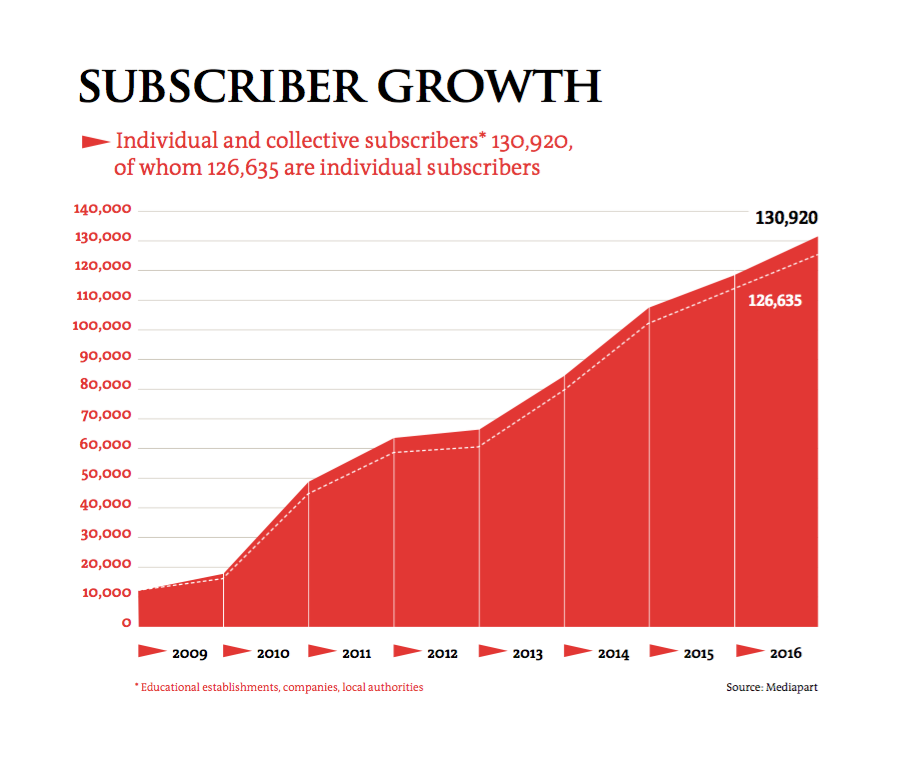From the Booth School of Business' ProMarket blog, April 6:
Is investigative journalism a private or public good? A new Stigler
Center case study focuses on the success of French online news website
Mediapart and explores the economics of media companies in the age of
digital disruption
Once a favorite to win France’s upcoming presidential election, François Fillon’s hopes of ever becoming president have been irrevocably dashed
in the past two months, following a series of revelations that as a
senator he had allegedly used public money originally intended for
paying assistants to pay hundreds of thousands of euros to his wife and
children for fake jobs as parliamentary aides. Previously the frontrunner, Fillon is now placed third in the polls, after he and his wife were formally charged with several counts of embezzlement and misappropriating public funds.
Many of the revelations that led to these
investigations and the derailment of Fillon’s campaign first appeared
in the online investigative magazine Mediapart. Back in 2014, Mediapart reported that at least 20 percent
of French parliament members employed their immediate family members
(hiring family members is legal for MPs in France, so long as the jobs
aren’t fake), calculating that 52 wives and 60 sons and daughters were
paid by MPs.
The Fillon scandal was the latest in a long string of investigations by Mediapart, a hard-hitting investigative website launched in 2008 by Edwy Plenel, the former editor-in-chief of the French newspaper Le Monde. In the past 9 years, on the back of several high-profile investigations that shook French politics and business world, Mediapart
has become one of France’s leading news outlets, with a growing
subscriber base that rivals those of some of the country’s major legacy
newspapers.
Moreover, Mediapart has also
managed to become highly profitable—practically unheard-of for an online
investigative news outlet—despite the fact that its business model
overtly defies every truism about how media outlets should operate in
the digital world: it displays no ads, has no corporate backers, and its
only source of revenue are the monthly fees paid by its subscribers.
Nevertheless, it still pays its journalists competitive salaries.
Mediapart is the subject of the first in a series of case studies
by the Stigler Center at the University of Chicago Booth School of
Business. It was chosen because of the crucial role independent
investigative journalism plays in reducing the power of vested interests
and allowing for competitive markets to function properly. The case was
written by Dov Alfon, Haaretz‘s editor-at-large in Paris, with
a teaching note written by Guy Rolnik, a Clinical Associate Professor
at Chicago Booth and Co-Director of the Stigler Center [also, one of the
editors of this blog]. On April 13, the case will be presented in a special Stigler Center event that
will feature Plenel, his co-founder Marie-Hélène Smiejan-Wanneroy, and
James T. Hamilton, the Hearst Professor of Communication and the
Director of the Journalism Program at Stanford.
In a global media landscape that’s characterized by shrinking ad revenues, conventional wisdom has it that investigative journalism is financially unviable. In his recent book Democracy’s Detectives,
which examines the economics of investigative journalism, Hamilton
writes: “Investigative reporting involves original work, about
substantive issues, that someone wants to keep secret. It is costly,
underprovided in the marketplace, and often opposed. It is more likely
done when a media outlet has the resources to cover the costs, an
incentive to tell a new story, cares about impacts, and overcomes
obstacles. Changes in media markets put local investigative reporting at
risk.”
With the disintegration
of journalism’s business model, newspapers were left with fewer
resources to fund costly and time-consuming investigations into the
misdeeds of politicians and regulators. Since the nature of the web
makes it more difficult to exclude access to information, and therefore
charge for it, private firms have far fewer incentives to produce it.
These developments, scholars like Hamilton say, have made investigative
journalism more of a public good.
Can we really expect the market to supply
quality investigative journalism that exposes wrongdoing, uncovers
corruption, and holds the powerful to account? Many would say there’s
simply no demand for it. The success of Mediapart, however, may provide a unique counterfactual.
Plenel, the publisher, editor-in-chief, and leading force behind Mediapart,
established the site in late 2007 together with three other partners,
all veteran journalists—Laurent Mauduit, François Bonnet, and Gérard
Desportes—with the aim of providing a new outlet for investigative
journalism that would not be beholden to any political or financial
interests. The four were all highly experienced journalists, but had
absolutely no experience in business. For this, they relied on
Smiejan-Wanneroy, an entrepreneur and marketing expert. They managed to
raise €2.9 million prior to launching, mostly from friends, two
individual investors, and out of their own pockets, figuring that 50,000
subscribers would allow them to break even.
In order to achieve total independence, Mediapart’s
founders chose a unique business model, which includes no advertising
and instead relies on subscription fees to pay for content—a risky proposition
today and even riskier in 2007, back when most news outlets had yet to
erect paywalls and the notion that readers would never be willing to pay
for online content was the predominant view.
Despite having no source of revenue other
than its monthly subscription fee (currently at €11 and initially €9,
although various promotional deals have offered reduced fees), Mediapart has been profitable since 2011—three years after its launch. For 2016, it reported a net profit
of €1.9 million and a 10 percent growth in revenues. It currently has
140,000 subscribers (compared with 15,000 in 2010), and its subscription
revenues have grown more than 18-fold since 2008.

Mediapart’s profitability stands out, even when compared to much older, much bigger, much more established counterparts: Mediapart’s operating margin was 18 percent in 2016, compared with 6.5 percent for the New York Times. Similarly, while the Times’ net margin stood at 1.9 percent last year, Mediapart had a net margin of 16.6 percent....MORE
